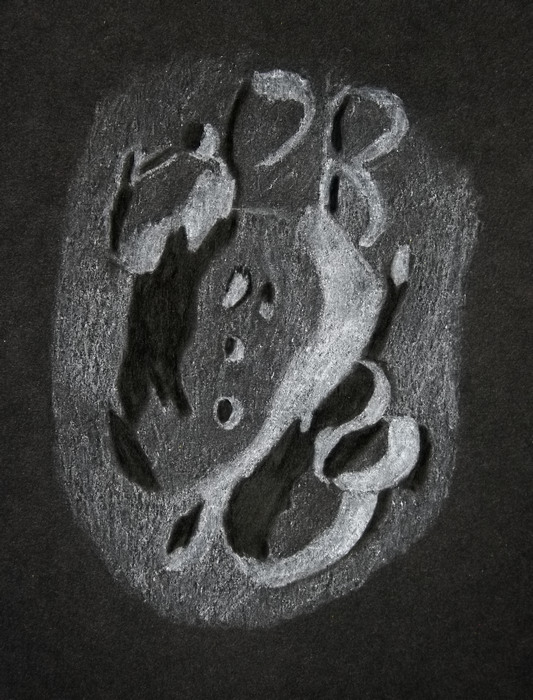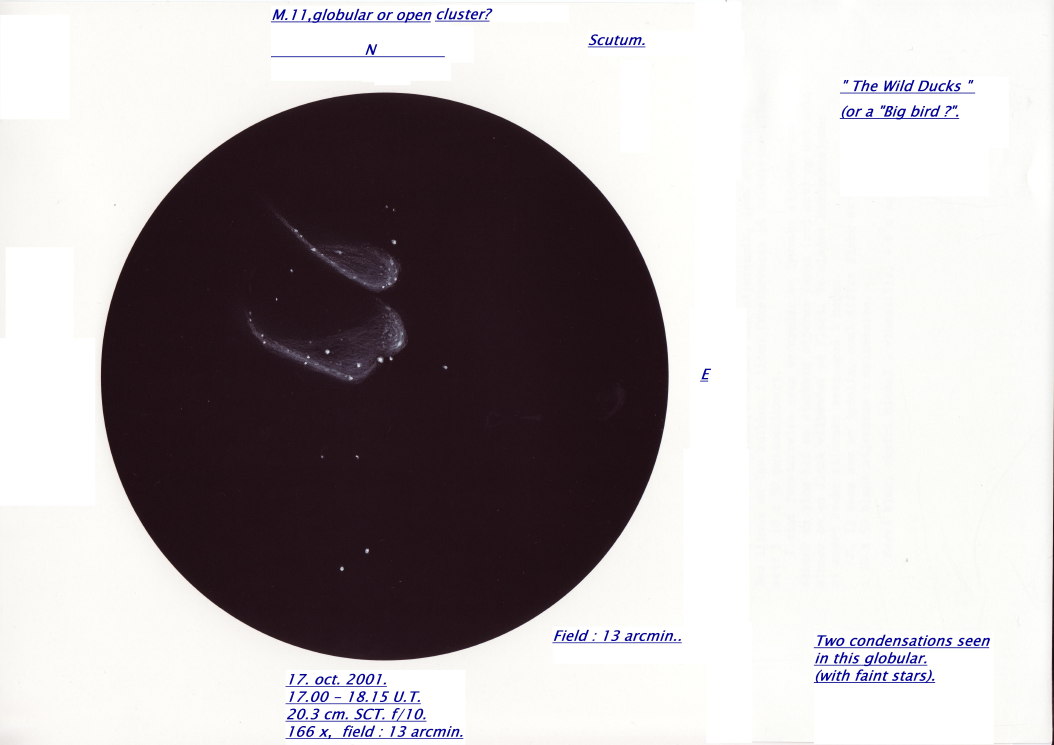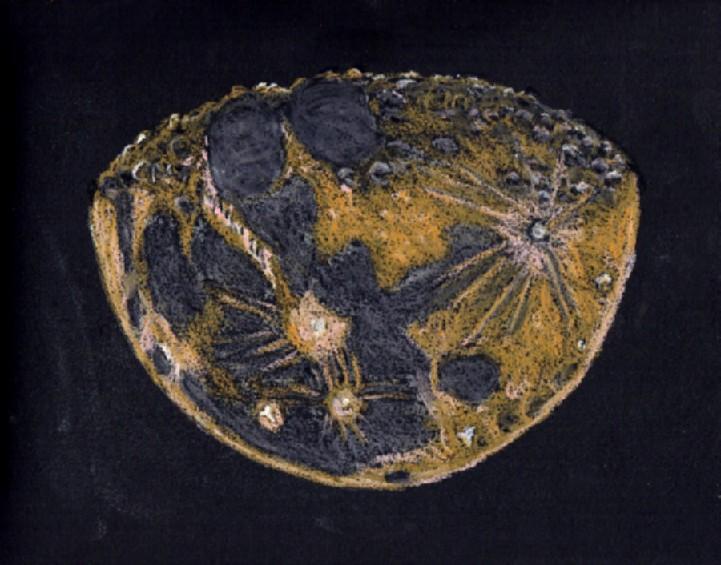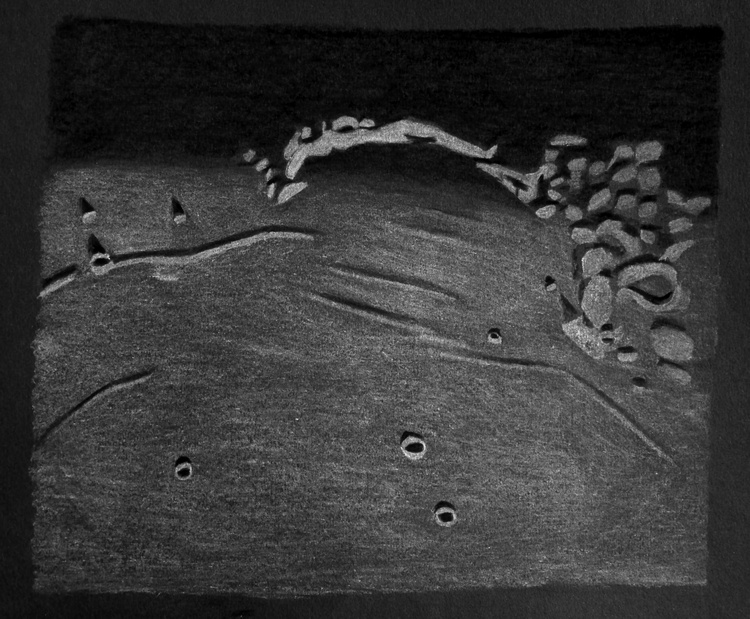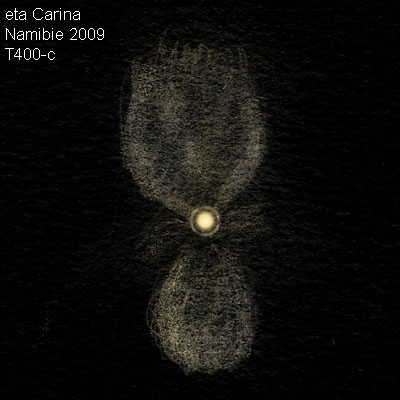NGC 6543 Planetary nebula in Draco
Sketch and Details by Per-Jonny Bremseth
Hey !
I send you N.G.C. 6543 “small and nice”.
The planetary is small, light and with some structures in high
power of my scope. The colour is yellow and its called “The cats
eye”. The central star is clearly seen in moments of steady air
and good seeng. An inner ring was seen round the star with a
darker area inside!
I used crayons (watercolours) on black paper only.
Location: outside Trondheim city, Norway.
More info on my sketch.
Have a clear sky: Per-Jonny Bremseth.

